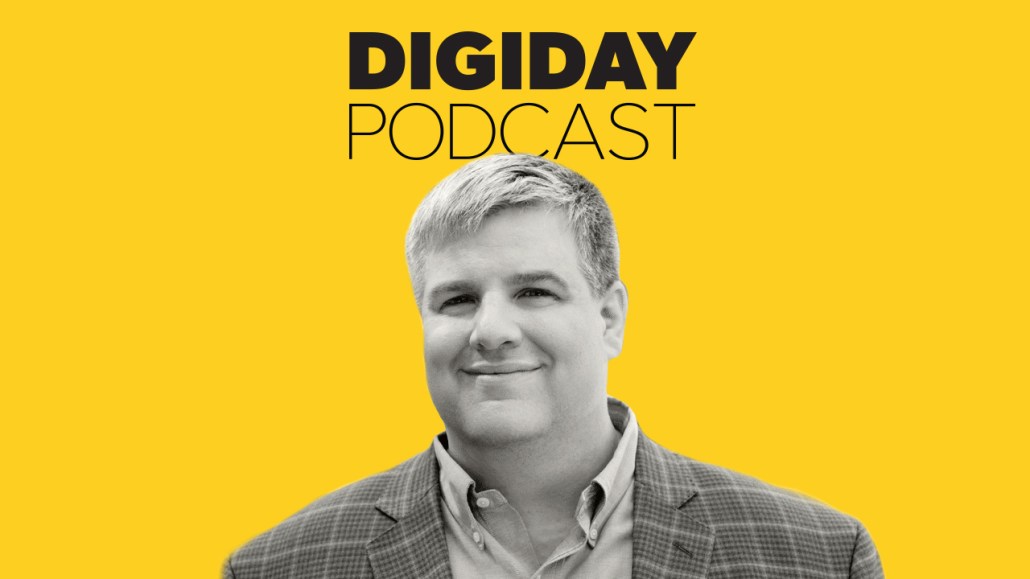Save 50% on a 3-month Digiday+ membership. Ends Dec 5.

Subscribe: iTunes | Google Play | Stitcher | Anchor
As publishers focus on digital products — from their sites to apps to newsletters to podcasts — it’s getting hard to operationalize the process. They face everything from broken workflows, a lack of a seamless functionality and a lack of efficiency.
For Paul Ford, CEO of Postlight, publishers need to stop waiting for an innovation that will fix these issues — and just focus on efficiency instead.
On this episode of the Digiday Podcast, part of a five-episode series where we invite guests to dive deep into the mechanics of making products that make money, we took an in-the-weeds look at what makes a successful digital product.
“There’s no miracle cure,” Ford said on the Digiday Podcast. “There’s nothing to solve. There are 8 billion ad-related and ad tech companies. There’s three ways to put content online. And you’re going to have to find a compromise between that whole universe. If you try to find that miracle cure, I’ve seen tech teams that are demoralized. I don’t think there’s an unbelievable amount of innovation to come like there was in 1997. We know people like to read articles of a certain length and there’s only so much you want to spend on each article unless you’re crazy and you want to spend thousands of dollars. We’re hitting this point of efficiency.”
Ford discussed what lacks in product development workflows, how websites reflect the priorities of a media organization and more on this episode. Edited highlights are below:
Ad position: web_incontent_pos1
Editors and tech teams are rarely a priority at media organizations.
“People often don’t have good experiences building things. People worry about ads and brand relationships but they don’t always worry about the experience of editor filling out the box and doing the headline. Editors are rarely an institutional prerogative. They are more at places like The Times, where their brand, quality and content comes first. They have very large tech teams. Some of the technology energy goes back towards the editors. A lot of other places are figuring it out. The text box that was there five years ago is what everybody’s still filling out. There is a bottomless appetite for money in [a lot of] organizations. You can’t get enough optionality into an organization. It’s a product problem. Media organizations don’t empower product people the same way they empower executive editors.”
Organizational dynamics clearly show on a website.
“[If] we pick a rectangle on any page of The New York Time, how many people participate in that 100×100 rectangle? Let’s say it has a video in it. By the time you get all the editors and the web team, the various video editors and the SEO team involved, it’s 50-60 people are thinking about those tiny boxes of pixels. You multiply that out and it’s in the thousands very quickly. The organizational dynamics are always right there. What really shows up is what’s changing fastest. If you get more and more ads, sales have won. It’s a straight-up revenue-driven organization, that doesn’t care about quality. It only cares about getting to the next quarter. If you see beautiful big features and graphics that cost a lot of money but have very speculative revenue potential, then you’re seeing an editorial victory.”
The ideal form of product workflows.
“Start with true and genuine product leadership, who is able to think about top to bottom organization, analytics, SEO strategy and not just implementing a CMS and setting up content. It’s product, design and engineering. If you’re always re-inventing what an article looks like you don’t get an efficiency. The engineering team has to be empathetic but also has to make it solid and stable. There has to be a product empathetic to platform driven by design. Product and design usually hand their work to engineering and then come back a couple months later. The ones where the product leader who talks to them every day gets you to an integrated product that works.”
Tech teams have more cultural fluidity.
“If you’re in technology at a publishing company, you’re just not the star. There are reasons why something is broken and it’s likely that they have clearly articulated those reasons and no one has listened to them. There are fights and conflicts. A lot of times the person who is most pissed off leaves in three weeks. There’s a point of toxicity and frustration that happens in these organizations and in media organizations, there’s a ritual to it. You can stay toxic for years in the industry or [know that as a tech person] you have far more career optionality than almost anybody else. They get to roll their eyes than anybody else does.”
More in Media

Digiday+ Research Subscription Index 2025: Subscription strategies from Bloomberg, The New York Times, Vox and others
Digiday’s third annual Subscription Index examines and measures publishers’ subscription strategies to identify common approaches and key tactics among Bloomberg, The New York Times, Vox and others.

From lawsuits to lobbying: How publishers are fighting AI
We may be closing out 2025, but publishers aren’t retreating from the battle of AI search — some are escalating it, and they expect the fight to stretch deep into 2026.

Media Briefing: Publishers turn to vertical video to compete with creators and grow ad revenue in 2026
Publishers add vertical video feeds to their sites to boost engagement, attract video ad spend and compete with news creators.
Ad position: web_bfu


